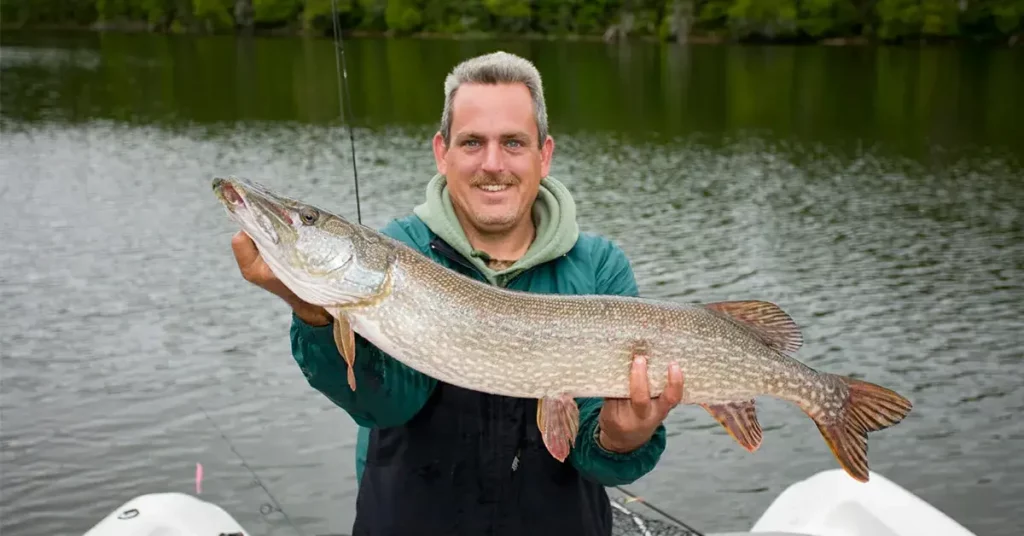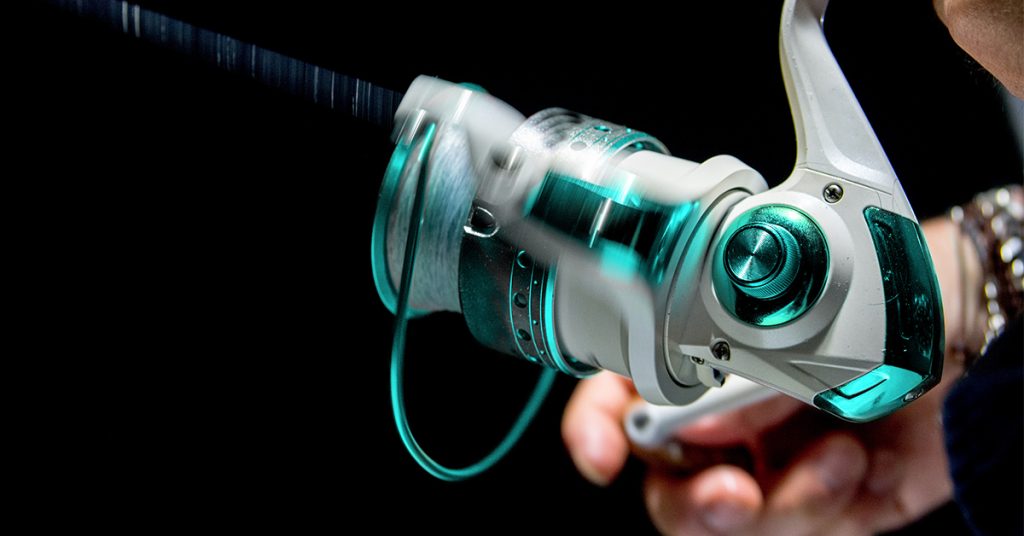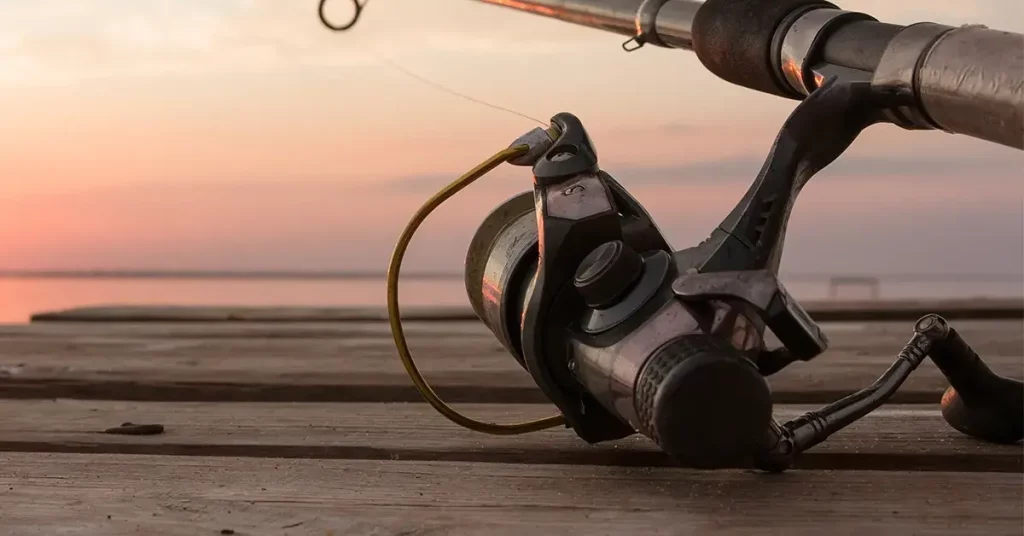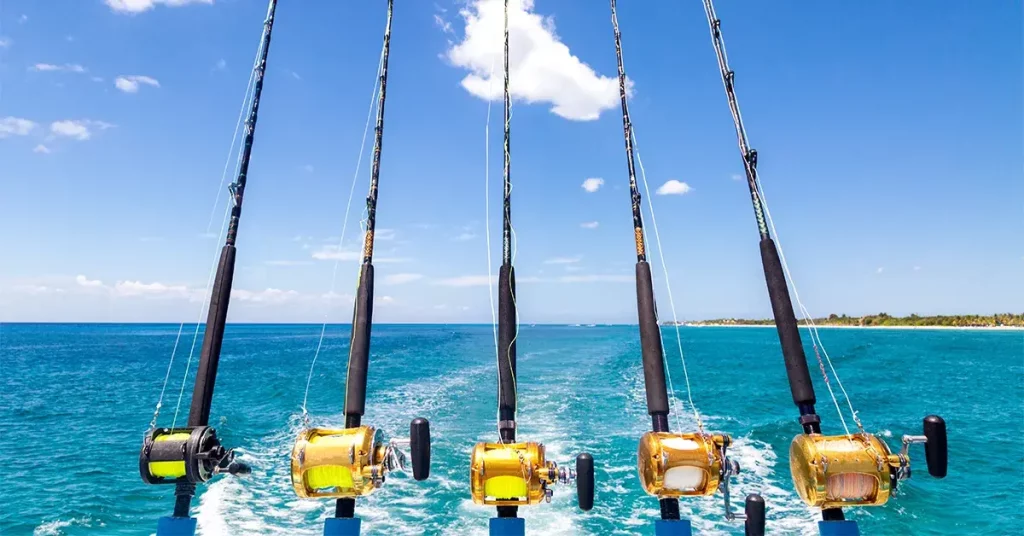The mighty northern pike is one of the most desirable game fish for both experienced anglers and newbies. With their razor-sharp teeth, serpentine shape, and aggressive nature they truly are high-energy predators – and the stuff of many fishing tales and legends.
Due to their aggressive feeding style, these fish make a great target all year round and can be caught on a variety of bait and lures.
Northern pike are often fished for their trophy size, but can also make excellent table fare – providing you know how to remove their prominent ‘y-bones’.
This article will explain everything you need to know to locate, identify, catch and cook these incredible freshwater predators. Read on for more northern pike fishing tips and tactics!
Northern Pike Facts
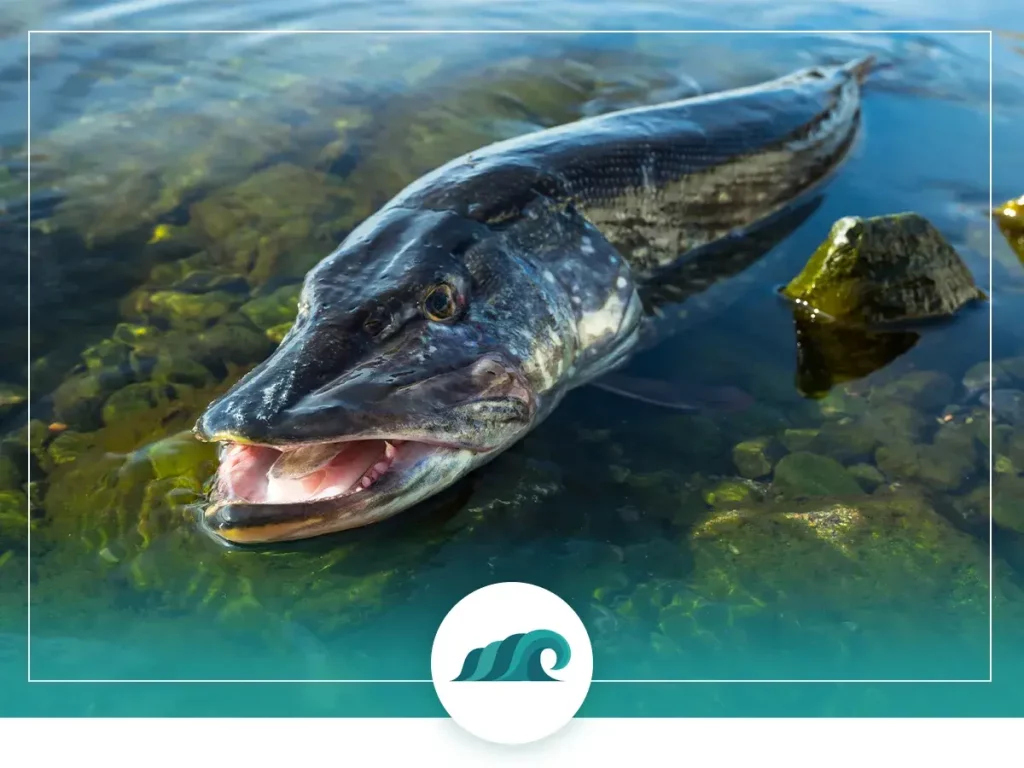
The northern pike (Esox lucius) is a carnivorous fish of the Esox genus. It’s known by a number of different names, depending on the region. It’s called pike in most US States and Europe, and is often called jackfish or simply northern in the upper Midwest and parts of Canada.
Interestingly, the name ‘pike’ comes from its resemblance to the medieval pole-weapon of the same name.
Northern pike are widely known for being voracious predators and will snap aggressively at a wide variety of baits and lures – which makes them a preferred target for many anglers. Due to their size and aggressive nature, they often become the top predators in whatever body of water they inhabit.
Mature northern pike have few natural predators, other than humans, birds of prey and the occasional land-based hunters like foxes and bears. This allows them to grow very large, especially in remote areas where fishing pressure is minimal.
Pike are also known for cannibalizing their own in times of food scarcity. This occurs when the ratio of pike to bait fish approaches 2 to 1.
They have the ability to swallow fish nearly the same size as themselves. Young pike have even been found dead, having choked on a similar sized pike.
World Record Northern Pike
The official IGFA all-tackle world record for Northern Pike is 55 lb. 1 oz. (25 kg.), caught by Lothar Louis in Greffern Lake, Germany in 1986.
Although the official record is 55 lbs, northern pike up to 70 lbs. have been reported in the wild.
Physical Characteristics
Northern pike are typically yellow-green to olive-green, with small white or yellow bean-shaped spots along their flanks and darker spots along their fins. Their bellies are lighter colored than the rest of their bodies.
One of the pike’s most defining characteristics is its impressive size. They have long cigar-shaped bodies with a single dorsal fin located close to their tail fin. The average length for pike caught in North America is 18” – 30”, but pikes up to 59” have been recorded.
Female northern pike are naturally larger than males. Keep in mind that pike in North America typically doesn’t grow as large as their European counterparts.
Similar to other fish in the Esox family, northern pike have large canine-like heads with an impressive set of sharp teeth. Pike teeth can easily tear through standard fishing line and cut up your fingers if you’re not careful – so bring a good pair of fishing pliers and fish grips with you when you’re targeting them.
Northern pike closely resemble both muskellunge (Esox masquinongy), and chain pickerel and anglers often confuse the two species. A close examination of the two fish reveals some key differences though. The pike’s tail and caudal fins are more rounded, they’re typically darker colored and have more scale coverage on their cheeks.
A hybrid of the two species is known as the tiger muskellunge.
Northern Pike Range
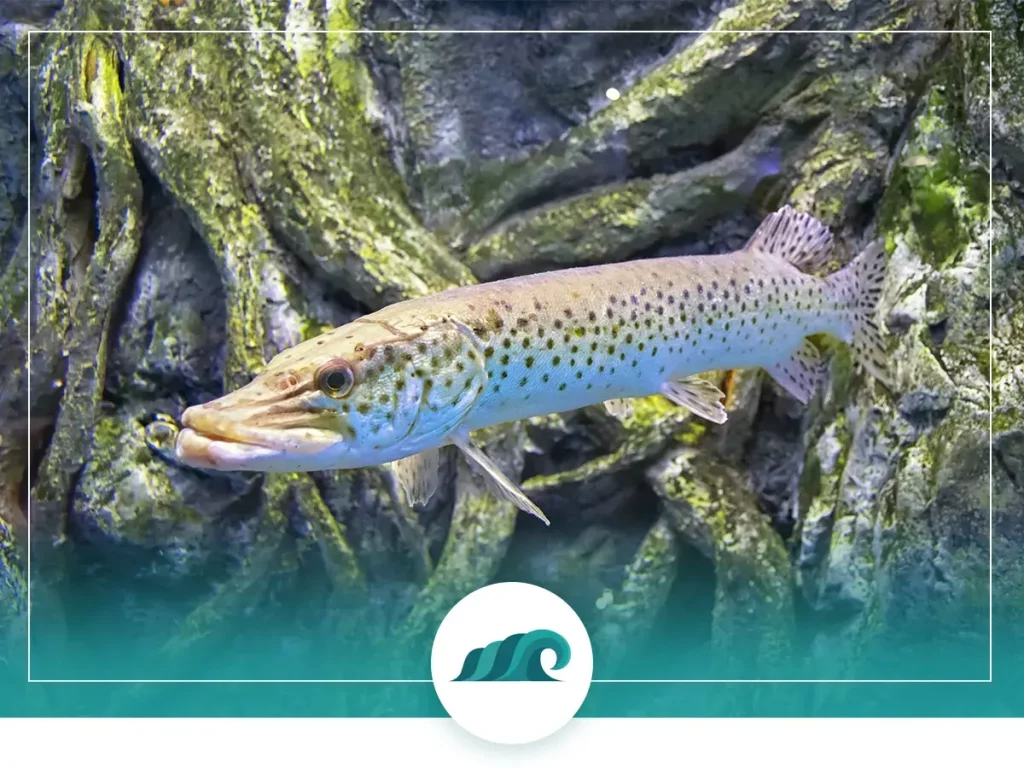
Northern pike are widely distributed throughout freshwater lakes and rivers in the Northern Hemisphere. Their natural range extends from the Arctic portions of North America, Europe, Asia and Siberia to approximately the 40th parallel.
Within the United States, they can be found throughout the Midwest, down to the upper Mississippi river basin, in much of the northeast, as well as Alaska. They’ve also been introduced for sport fishing in several western states, but that practice is generally seen as destructive – as pike can easily decimate the populations of local game fish like trout, bass, and perch.
Northern pike is especially popular in the Midwest and is the official state fish of North Dakota.
In Canada, northern pike can be readily found in most provinces other than western British Colombia and the eastern Maritime provinces.
Northern Pike Habitat
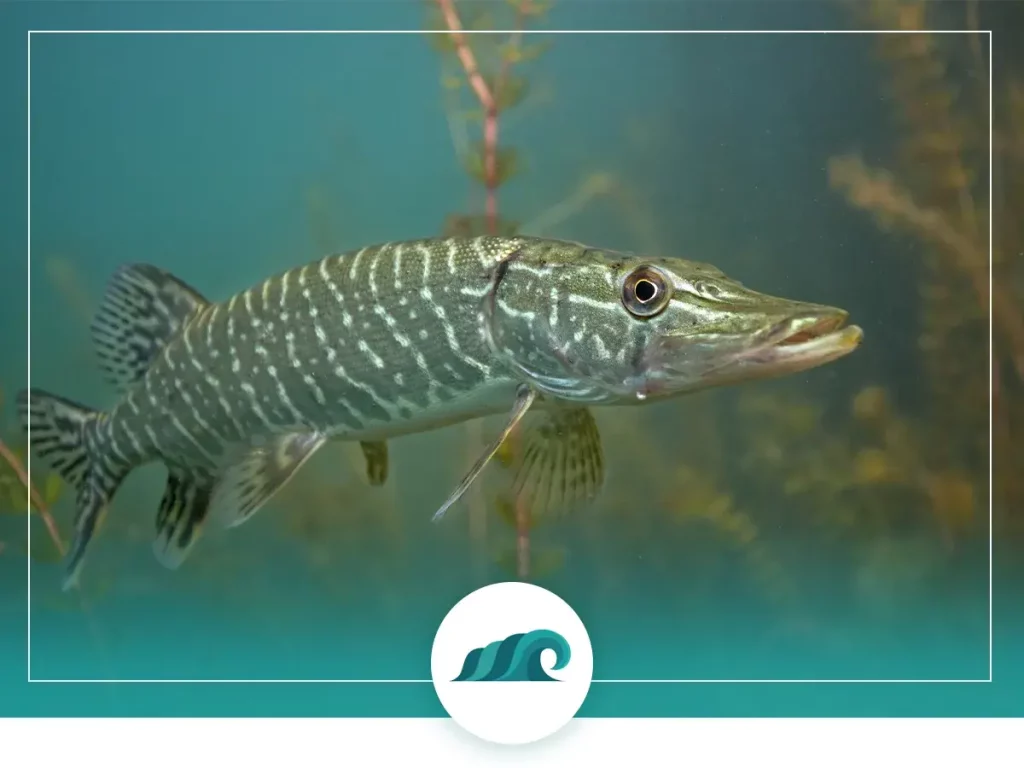
Pike prefer to inhabit shallow, weedy, and clear lakes, creeks and streams. They prefer cooler waters below 65° Fahrenheit and will retreat into colder, deeper water during the summer months. If you can locate a coldwater spring source, pike will often be nearby.
Areas with rich, submerged vegetation like weed beds are popular hangouts for pike. Because they are ambush predators, they tend to lie in wait for their prey – which requires some form of cover.
Northern pike will remain completely motionless for prolonged periods of time, waiting for a suitable baitfish to swim by and then strike.
Smaller pike generally hide in weeds and in shallow bays, partially because they need to avoid predation from larger pike. Large pike can often be found near the entrances to weedy bays and are more likely to frequent deeper water and actively cruise for prey.
What Do Northern Pike Eat?
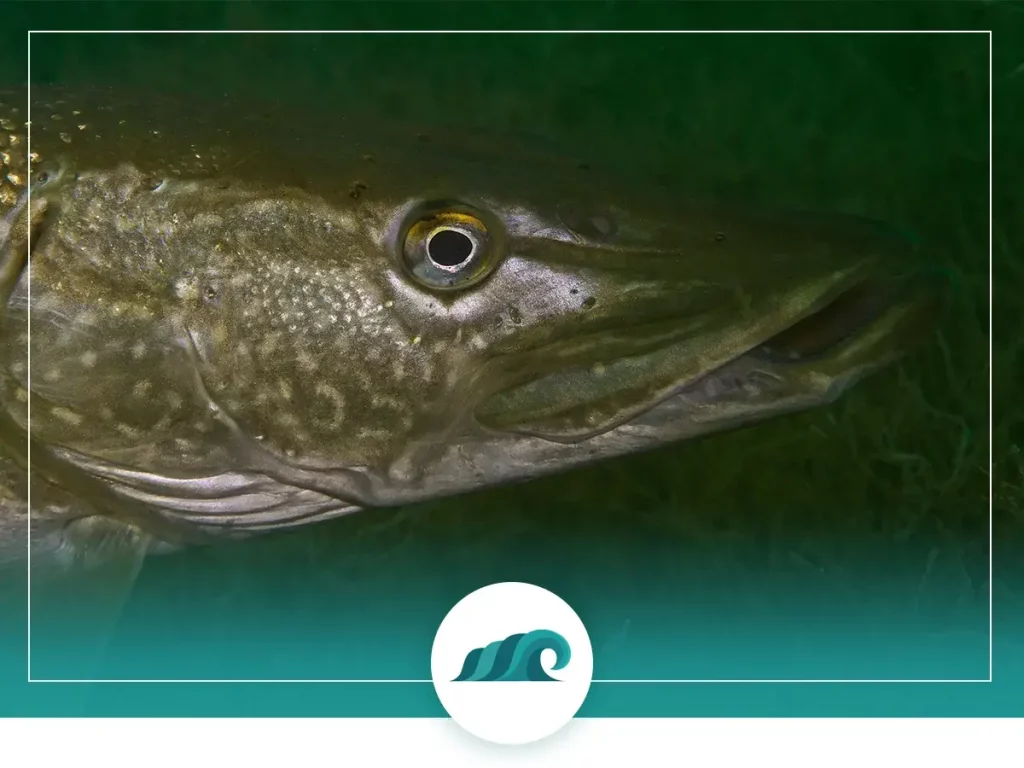
Pike are voracious predators and not at all picky when it comes to their diet. They’ve even been called ‘water wolves’ due to their feeding habits. They readily consume fish, frogs, water birds, and even small mammals like voles, shrews, and mice.
Because of their large heads and jaws, they have the ability to consume prey nearly the same size as themselves, and as mentioned previously are prone to cannibalism.
In many lakes, Northern pike primarily feed on yellow perch, shiners, and trout – and to a lesser extent bass and walleye.
Young pike begin feeding on small invertebrates and insects until they reach approximately 2” to 3” in length and then start feeding on smaller fish.
Because they rely heavily on their vision for hunting, they tend to more active during the daylight hours, and will be more difficult to catch at night.
How to Catch Northern Pike?
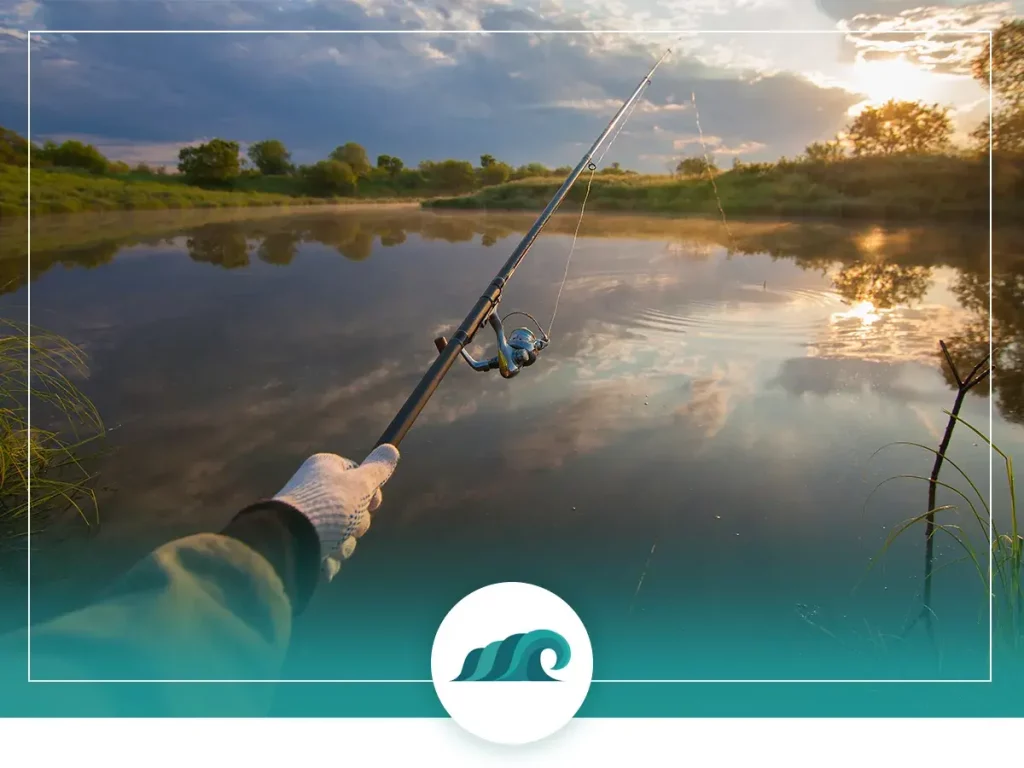
Northern pike are prized by many anglers for their size and fighting ability, their tasty white flesh, and the relative ease of catching one.
Where to Fish for Northern Pike?
Start out by casting in weed beds near swampy inlets. Pike often use these areas to rest and recuperate or lay in ambush for baitfish. Rocky outcroppings near inlets are another excellent area to target.
Shoreline structures like fallen timber, culverts and beaver dams also tend to attract northern pike due to the presence of schools of baitfish.
While pike is primarily known for being a shallow water fish, they will also hunt in deeper waters – especially trophy sized pike. If you have a fish finder, try to locate ridges near drop off points. These are spots where pike like to use as a staging area for swimming into really deep water in search of lake trout and whitefish.
Northern Pike Fishing Tips & Techniques
Due to their aggressive nature, pike can be caught using a variety of different methods and baits. Pike are not picky when it comes to artificial lures, and will bite at more or less any lure you’re likely to find in a tackle shop.
Although they’ll attack any sized lure, going with a larger lure will make life easier for you when you need to remove the hook. Make sure to bring a good pair of gloves, a jaw spreader and needle nosed fishing pliers!
Netting and subduing your catch is also advisable, as a large thrashing pike can easily injure itself and even you.
Due to the northern pike’s razor-sharp teeth using a coated steel leader is a must. They can tear through standard monofilament or braided lines like butter – which results in lost lures and fish. The exception to this would be when you’re trolling crankbait, as the fast-moving bait means the fish are much more likely to be lip hooked.
Don’t be afraid to move your bait around and make some noise. Pike are fairly aggressive and will respond to bait flopping loudly into the water. If there are pike in the area, then it shouldn’t take long to find out – don’t spend too much time in the same spot if you’re not getting bites.
Seasonal Northern Pike Fishing Tips
Like all freshwater fish, pike behave differently depending on the time of year. Adjusting your tactics to suit the season will enable you to find and catch more pike!
Spring Northern Pike Fishing
Springtime is probably the most productive time for pike fishing. The fish are either spawning or recuperating from spawning and start prowling for baitfish to put on weight.
They tend to hang out in shallow water during this time and will bite at a wide variety of lures and baits. Look for outflows of creeks, streams, and rivers entering larger bodies of water as walleye, perch, bass and other prey fish tend to congregate around these areas.
Because vegetation growth has not yet filled in, pike have fewer places to hide in ambush and will be more active in chasing down prey.
Summer Northern Pike Fishing
Summertime is generally a more challenging time to catch northern pike. The fish leave the shallow water for the depths in search of cooler water temperatures.
Pike prefer water temperatures between 63° and 65° F (17° – 18° C), which is significantly cooler than fish like walleye and muskies. Larger pike are particularly sensitive to temperature, which means any pike you’re likely to catch in the shallows will be relatively small.
If you’re looking to catch big pike in the summer, try to locate deep underwater structures in cooler parts of the lake. Trolling deep crankbaits is a good way to catch one of these monsters.
Fall Northern Pike Fishing
Fall is another high point for pike fishing. Pike return to the shallows and begin to feed heavily in preparation for the upcoming winter.
As they prefer to lie in ambush for their prey, you’ll find pike skulking in thick weedy areas during this time of year. Look for weed beds that are still green and haven’t yet died off. These will support aquatic insects and provide cover for the baitfish that pike like to eat.
Winter Northern Pike Fishing
Like the vast majority of freshwater fish, pike will slow down significantly during the colder winter months. They still remain fairly active though, and if you know where to find them, you can score a nice northern on the ice.
In early winter, they tend to remain in shallow water for as long as baitfish stay in the area. As winter progresses, they move into deeper water near drop off points and deep water structures like downed trees and rock piles where schools of baitfish congregate.
Northern Pike Fishing Rigs
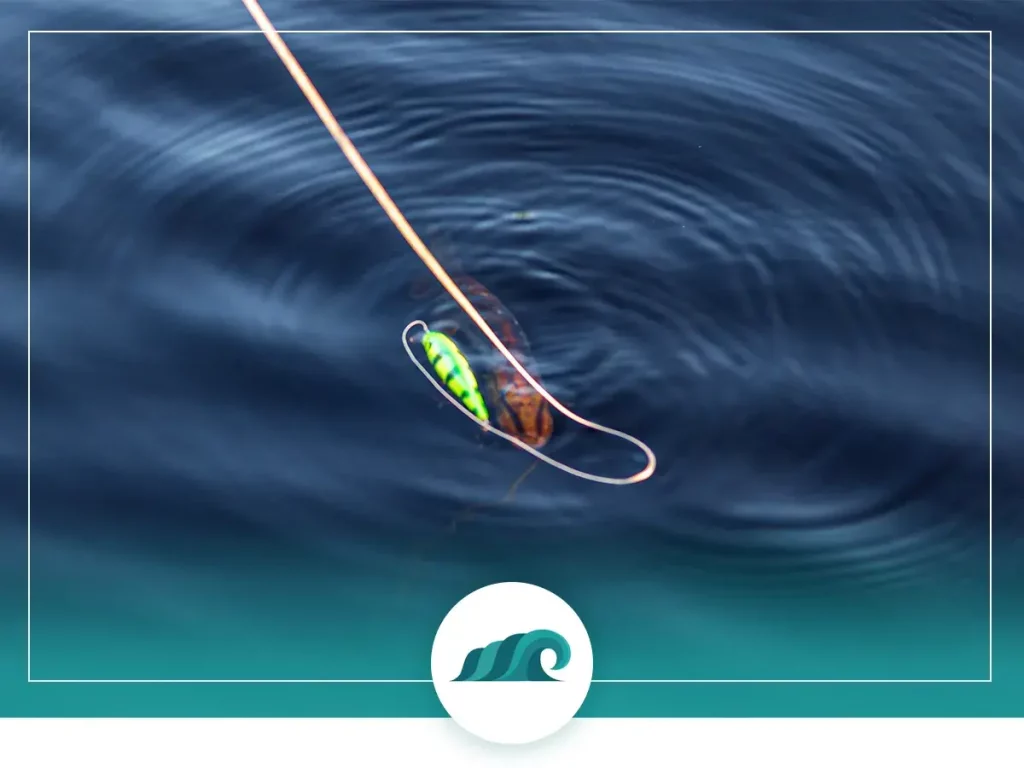
You’ll need a pretty sturdy setup to catch northern pike – especially if you’re fishing in an area with trophy-sized fish.
Lures and Bait
Pike aren’t picky – and can be caught on a wide variety of lures and bait.
Live Bait
Live bait works extremely well for pike, especially when artificial lures just aren’t getting the job done. The key to picking the right live bait for pike is to match the bait to the pike’s size and try to mimic their natural food source. 4” to 6” live bait should work well.
If the pike are used to feeding on perch, then using minnows may not yield much success. If you can, try to seek out some local knowledge on what the pike are currently feeding on.
Dead bait is also very popular for targeting pike. As they are both scavengers and hunters, pike are quick to grab an easy snack in the form of a scavenged meal. Dead bait works best with a big float to keep it suspended 1 or 2 feet off the bottom.
Lures
While both live and dead bait works well to attract pike, some of the best pike fishing can be had with artificial lures. Some of the most effective lures for catching pike are spoons, inline spinners, plastic swimbaits, and topwater lures.
Spoons imitate the movement of baitfish in the water. They wiggle and wobble through the water as you retrieve them – presenting an irresistible target to a hungry pike. One of the most popular spoons for northern pike is the Eppinger Dardevle Diamonds Spoon – which works notoriously well for pike, muskie, and bass.
Inline spinners make excellent baits for pike and allow you to cover a lot of area. The spinning action imitates small baitfish moving through the water. The blade also creates vibrations which pike can detect with their lateral line.
Be sure to use a swivel when rigging up a spinner, otherwise, it can cause your line to twist and tangle.
Swimbaits are highly versatile and are one of the easiest ways to catch pike. You can fish them shallow, deep or somewhere in between – depending on the speed of your retrieval. A popular swimbait for pike is the Storm WildEye Swim Shad.
Try out a few different colors. As pike are visual hunters they like brightly colored lures like chartreuse, orange, and silver.
Topwater lures may be the most exciting way to fish for northern pike. There’s nothing like the exhilarating feeling of a big northern blowing up your topwater bait. As pike are ravenous eaters, they’ll bite at a wide variety of topwater plastic lures like frogs, ducks, mice, and rats.
Check out the Savage Gear 3D Topwater Duck and RUNCL Topwater Frog Lures for some exciting topwater action!
Best Northern Pike Rod
Because northern pike can grow fairly large, it makes no sense to bring a rod too light for the job. A medium to medium-heavy rod with moderate action in the 7 to 8-foot range is a good overall choice.
If you don’t have a rod like that, you can get away with using a typical bass fishing setup – unless you’ve got some real monsters in your area.
The Ugly Stik Elite Spinning Rod 7’ Medium Heavy would make an excellent choice for targeting northerns.
Best Northern Pike Reel
Both baitcasters and spinning reels can work well for pike fishing. Keep in mind that baitcasters are more suited to casting heavier lures like big spoons and bucktails while spinning reels can cast a variety of baits weighing 1 oz. or less.
A spinning reel in the 3000 to 4000 size range will give you enough heft to handle large pike. An excellent option would be the Penn Battle II Spinning Fishing Reel.
For a baitcasting reel, the Daiwa Lexa 400 will enable to you cast heavier baits and is beefy enough to handle trophy sized pike.
Best Fishing Line for Northern Pike
Most anglers prefer braided line when fishing for pike. Braided line is highly durable and will hold up to casting in rocky and woody areas. Because of its lack of stretch, it’s also far more sensitive than monofilament.
Going with 20 to 30 lb. test line is a safe bet.
Keep in mind that whenever you’re fishing for pike you should utilize a 1 to 3-foot long multi-strand steel or titanium leader to prevent the pike from shredding through your line. Some anglers also like to use a fluorocarbon leader in the 60 to 80 lb. test range.
Cooking Northern Pike
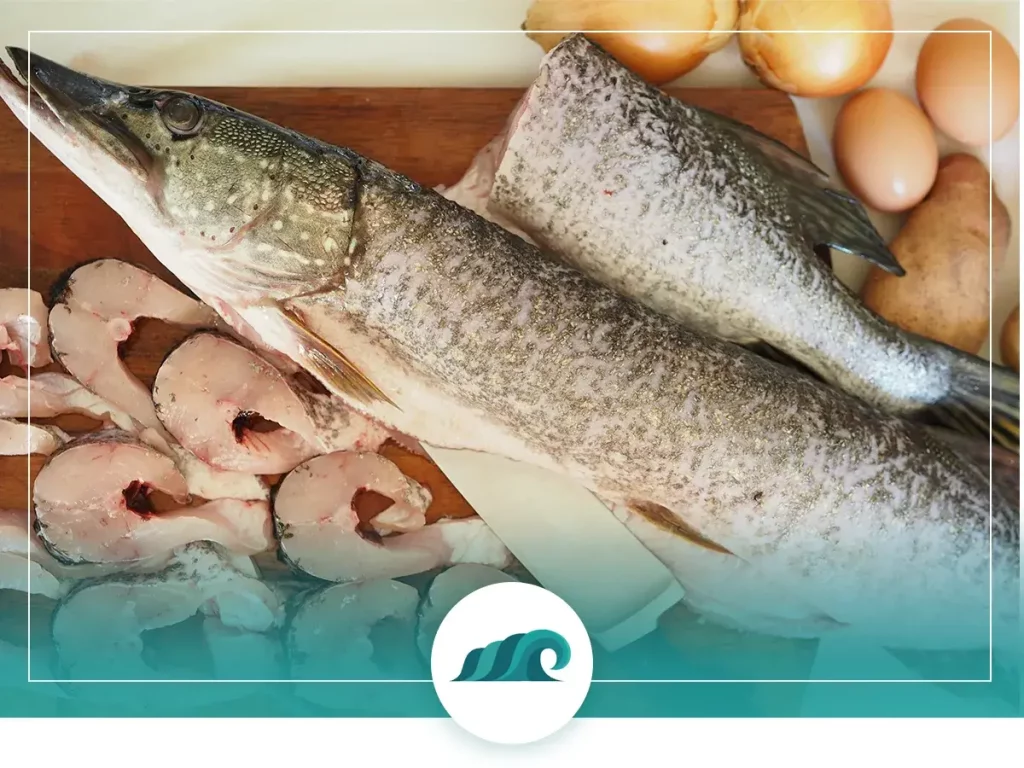
Northern pike are not only great for sport fishing, but they’re pretty damn tasty if prepared well. The flesh is light and flaky with a delicate taste. Many anglers even rank them up with freshwater favorites like walleye and trout.
Some anglers avoid keeping pike to eat because of their prominent ‘y-bones’ – but these can actually be removed pretty easily.
How to Fillet a Northern Pike
Check out this excellent video for a step-by-step guide to filleting a northern (including removing the y-bones):
Oven Baked Northern Pike Recipe
Ingredients:
- 2 to 3 pounds of skinless pike fillets
- 4 tablespoons butter
- 1 medium-sized onion
- Salt and pepper
- Lemon
- Freshly chopped herbs (parsley or cilantro work well)
Directions:
- Season the fillets with salt, pepper and most of the chopped herbs.
- Chop onion into thin rounds and place on top of the fish.
- Place fillets on a baking dish with slices of butter on top of them.
- Bake at 350 degrees for approximately 15 to 20 minutes.
- Top with the remainder of chopped herbs and freshly squeezed lemon.

